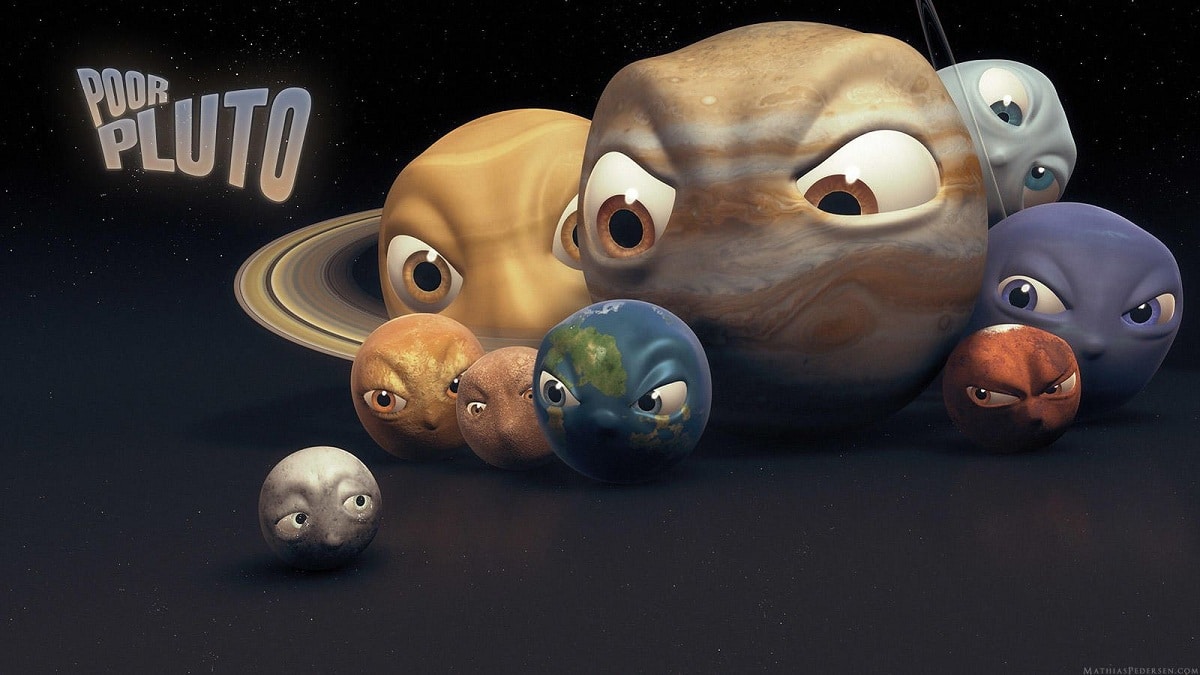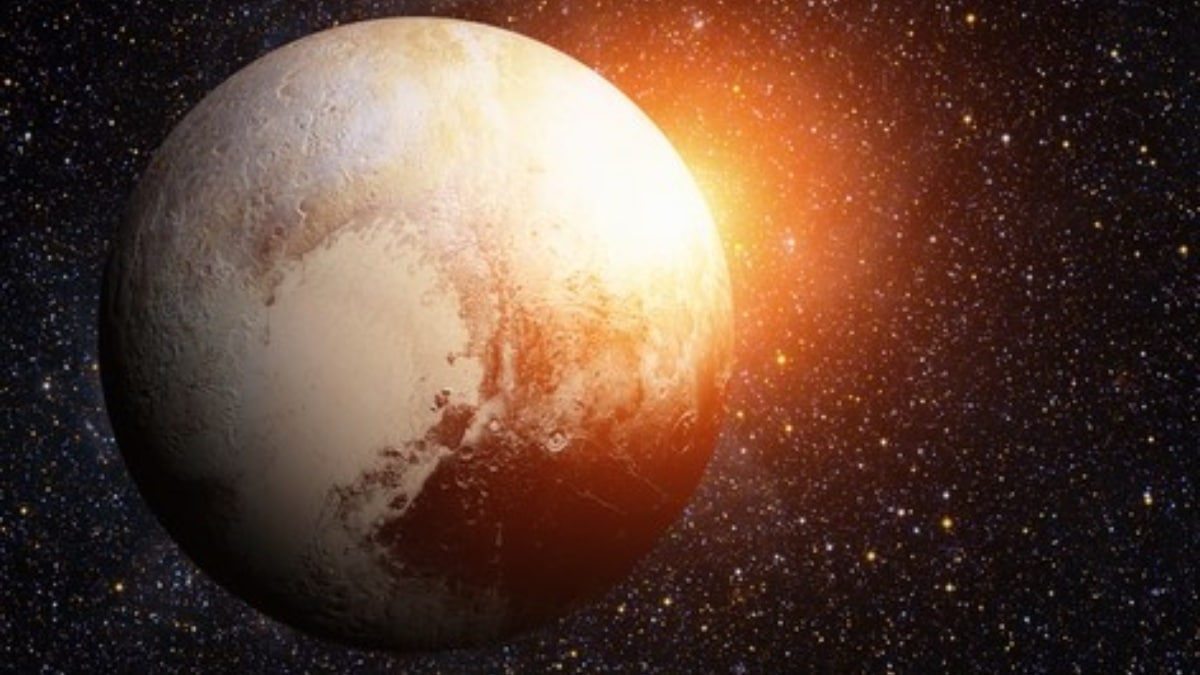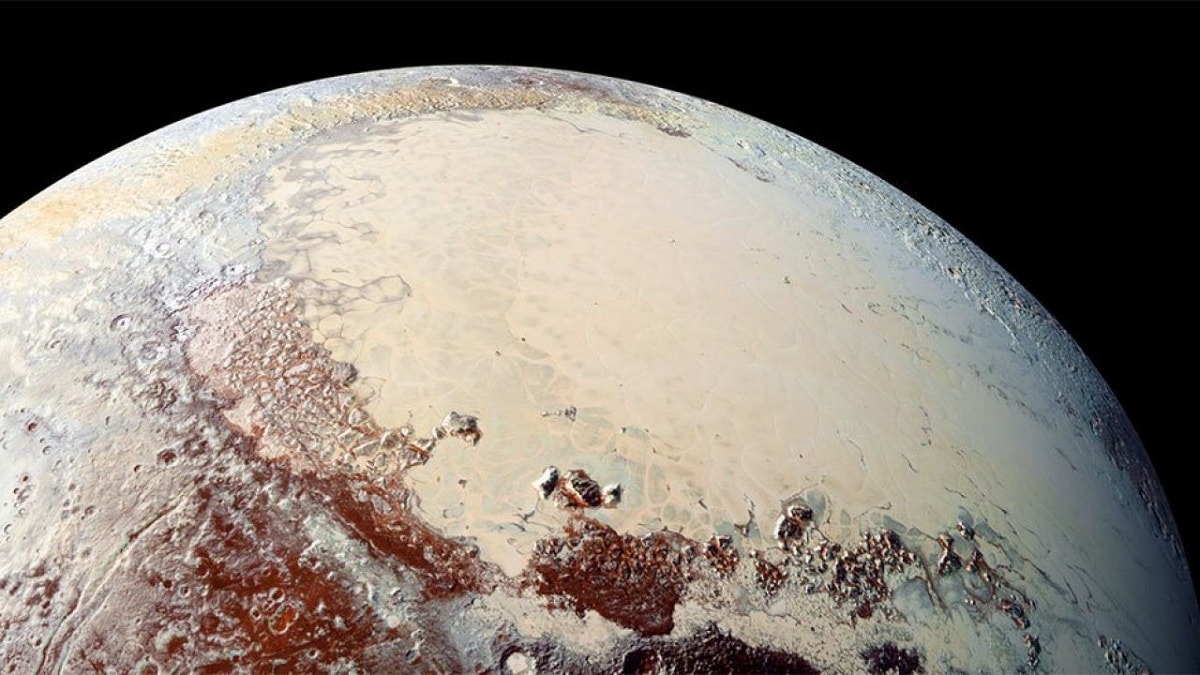
Pluto, the forgotten planet, is no longer a planet. In our solar system there used to be nine planets until it was redefined whether a planet was a planet or not, and Pluto had to come out of the conjunction of the planets. In 2006 it was recognized as a dwarf planet after 75 years of work in the planetary category. However, the importance of this planet is considerable because the celestial body that passes through its orbit is called Pluto. Many people don't know why is pluto not a planet.
For this reason, we are going to dedicate this article to telling you what are the main reasons why Pluto is not a planet and what its characteristics are.
Key features

The dwarf planet orbits the sun every 247,7 years and covers an average distance of 5.900 billion km. Pluto's mass is equal to 0,0021 times the mass of Earth. or a fifth of the mass of the Moon. This makes it very small to be considered a planet.
Yes, it has been a planet of the International Astronomical Union for 75 years. In 1930, it received its name from the Roman god of the underworld.
Thanks to the discovery of this planet, great discoveries such as the Kuiper Belt were later discovered. It is considered the largest dwarf planet, behind Eris. It is formed mainly from certain types of ice. We find that ice is made of frozen methane, another is water, another is rock.
Information about Pluto is very limited, because technology since the 1930s has not been far enough advanced to provide significant discoveries of objects that far from Earth. Until then, it was the only planet not visited by spacecraft.
In July 2015, thanks to a new space mission that left Earth in 2006, he was able to reach the dwarf planet and obtain a lot of information. This information takes a year to reach our planet.
Information on dwarf planets

Due to the increase and development of technology, many results and information about Pluto are being obtained. Its orbit is quite unique, given its rotational relationship to the satellite, its axis of rotation, and changes in the amount of light hitting it. All these variables make this dwarf planet a great attraction for the scientific community.
It is what is further from the sun than the rest of the Earth that makes up the solar system. However, due to the eccentricity of its orbit, it is 20 years closer than Neptune's orbit. Pluto crossed the orbit of Neptune in January 1979 and did not approach the Sun until March 1999. This event will not happen again until September 2226. As one planet enters the orbit of another, there is no possibility of a collision. This is because the orbit is 17,2 degrees relative to the ecliptic plane. Thanks to this, the paths of the orbits mean that the planets never meet.
Pluto has five moons. Although its size is comparable to that of our asteroid, it has 4 more moons than us. The largest moon, called Charon, is about half the size of Pluto.
Atmosphere and composition
Pluto's atmosphere is 98 percent nitrogen, methane, and some trace amounts of carbon monoxide. These gases exert a certain pressure on the Earth's surface, although it is about 100.000 times less than the pressure on Earth at sea level.
Solid methane was also found, so the temperature of the dwarf planet is estimated to be below 70 Kelvin. Due to the special type of orbit, the temperature has a considerable range of variation along it. Pluto can be as close as 30 AU to the sun and up to 50 AU away from the sun. As it moves away from the sun, a thin atmosphere develops on the planet, which freezes and falls to the surface.
Unlike other planets like Saturn and Jupiter, Pluto is very rocky compared to other planets. After investigation, it was concluded that most of the rock on the dwarf planet is mixed with ice due to the low temperature. As we have seen before, ice of different origins. Some are mixed with methane, others with water, etc.
This can be accounted for given the types of chemical combinations that occur at low temperatures and pressures during planet formation. Some scientists speculate that Pluto is actually Neptune's lost moon. That's because it's possible the dwarf planet was thrown into a different orbit during the formation of the solar system. Therefore, Charon is formed by the accumulation of lighter matter from the collision.
Pluto's rotation
Pluto takes 6.384 days to complete one rotation because it is synchronized with the orbits of the moons. That is why Pluto and Charon are always on the same side. Earth's axis of rotation is 23 degrees, while this asteroid's axis of rotation is 122 degrees. The poles are almost in their orbital planes.
When it was first seen, the glow from its south pole was visible. As our view of Pluto changes, the planet appears to darken. Today we can see the equator of the asteroid from Earth.
Between 1985 and 1990, our planet aligned with Charon's orbit. Therefore, a solar eclipse of Pluto can be observed every day. Thanks to this fact, it was possible to collect a large amount of information about the albedo of this dwarf planet. We remember that the albedo is the factor that defines the reflectivity of the solar radiation of a planet.
Why is Pluto not a planet?

In 2006, specifically on August 24, the International Astronomical Union (IAU) held a very important meeting: Define exactly what a planet is. That's because previous definitions failed to identify exactly what a planet is, and Pluto was at the center of the debate, as astronomer Mike Brown discovered an Eris object more massive than Pluto in the Kuiper Belt itself. This restricted astronomy at the time, since if Pluto qualifies as a planet, why doesn't Iris? If so, how many potential planets are left in the Kuiper belt?
The debate deepened until Pluto finally lost its planetary title during the 2006 IAU meeting. The International Astronomical Union defines a planet as a roughly spherical body orbiting a star.. Also, the planets must have clear orbits.
Pluto does not meet the latter requirement, so it is officially excluded from being a planet in the solar system. But the debate is still open, with some arguing that Pluto should return to the official list. In 2015, NASA's New Horizons mission found that the "ancient" planet was larger than astronomers thought.
Mission commander Alan Stern was one of the astronomers who disagreed with the current definition of a planet, arguing that Pluto should remain among the planets of the solar system.
I hope that with this information you can know the reasons why Pluto is not a planet.
As always, the article is excellent, but alluding to the content given by scientists and based on my «Socratic ignorance», I consider that PLUTO is a Planet. Greetings